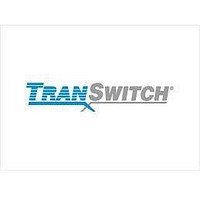TXC-03305AIPQ Transwitch Corporation, TXC-03305AIPQ Datasheet - Page 50

TXC-03305AIPQ
Manufacturer Part Number
TXC-03305AIPQ
Description
Manufacturer
Transwitch Corporation
Datasheet
1.TXC-03305AIPQ.pdf
(106 pages)
Specifications of TXC-03305AIPQ
Lead Free Status / RoHS Status
Not Compliant
Available stocks
Company
Part Number
Manufacturer
Quantity
Price
TXC-03305-MB
Ed. 4, September 2000
M13X
TXC-03305
PMDL OPERATION
The terminal-to-terminal path maintenance data link (PMDL) is a 28.2 kbit/s channel, which is available in the
C-bit Parity format mode, and is used to communicate DS3 path identification, DS3 signal identification, and
DS3 test signal identification between terminals. The PMDL channel is carried in the C13, C14, and C15 DS3
C-bits and uses an HDLC protocol as defined in ITU-T Recommendation Q.921 (3/93).
The HDLC message frame is composed of four parts: an opening flag, the message (which consists of 79
bytes), a two-byte FCS-16 frame check sequence, and a closing flag, as shown in 24 below.
The bit numbering convention indicated in [Q.921] sections 2.8.2 and 2.8.3 is followed in Figure 24. The PMDL
block (or HDLC Controller) performs the following functions:
Bit 1 is the least significant bit and is the first bit transmitted/received. The opening and closing flags are repre-
sented by a single, unique 8-bit character defined as 01111110, which contains six contiguous ones. A two-
byte FCS-16 frame check sequence is computed across the contents of the message (after the opening flag),
and appended to the end of the message. The polynomial for the FCS is x
section 2.7. To avoid the occurrence of a false flag within the transmit data stream, a 0 is inserted (stuffed) after
each string of five contiguous ones between the opening and closing flags. The time between consecutive
frames is filled with one or more flags.
In the receive direction, the HDLC controller frames to the flag characters to determine the byte boundary and
the start of the data. All flags are discarded and destuffing is performed on the data. Destuffing is the process
of replacing any 111110 patterns detected between the opening and closing flags with 11111. Reception of
more than six contiguous ones before destuffing is interpreted as a frame abort sequence. When an abort
sequence is received, the remainder of the current frame is ignored and the received portion should be dis-
carded by the end user as an invalid frame. When two or more frames occur in sequence, they may share the
boundary flag between them (i.e., the closing flag of the first frame can serve as the opening flag of the next
frame) ([Q.921] section 2.2). The M13X is able to successfully delineate HDLC-encapsulated PMDL messages
in this case.
An 80-byte PMDL FIFO is provided in the transmit direction to allow at least one complete message to be
stored for processing. A 159-byte PMDL FIFO is provided in the receive direction, which permits at least two
Opening Flag
Closing Flag
• Zero bit stuffing/destuffing (11111 to 111110 /111110 to 11111) ([Q.921] section 2.6)
• ITU-T FCS-16 generation/checking (16-bit sequence) ([Q.921] section 2.7)
• Flag generation/detection (01111110) ([Q.921] section 2.2)
• Abort generation/detection (01111111...) ([Q.921] section 2.10)
• Start of frame detection ([Q.921] section 2.2)
• End of frame detection ([Q.921] section 2.2)
• FIFO overflow and underflow
• Invalid frame detection and discard ([Q.921] section 2.9).
Message
FCS-16
Bit
2
2
8
0
0
8
0
7
1
1
Figure 24. HDLC Format
Address and Control Information (79 bytes)
DATA SHEET
6
1
1
- 50 -
5
1
1
4
1
1
16
+x
12
3
1
1
+x
5
+1 as specified in [Q.921]
2
1
1
2
2
1
0
0
15
7












